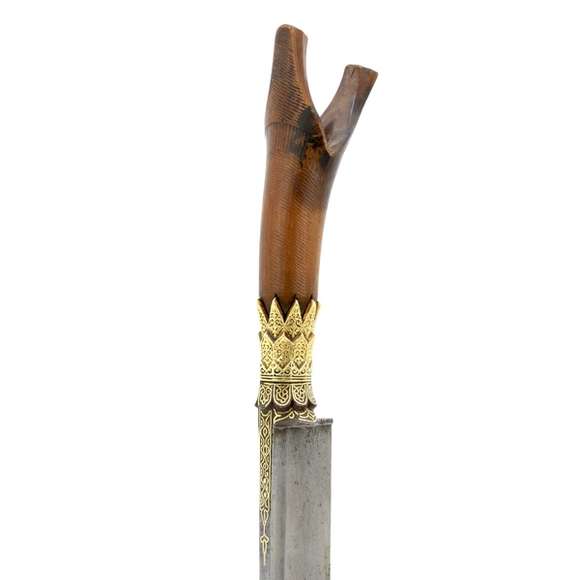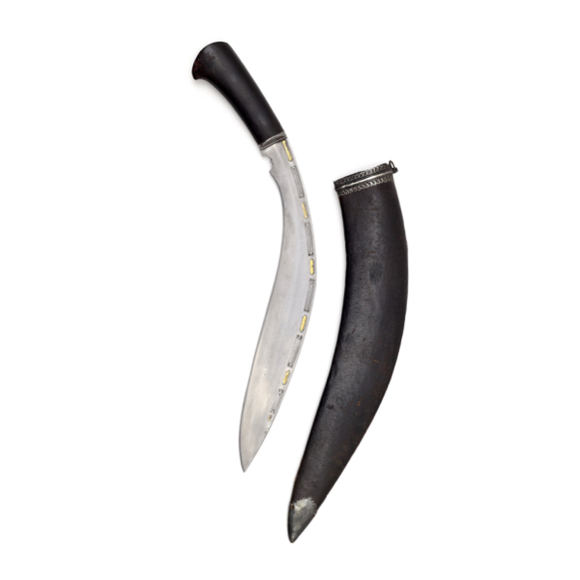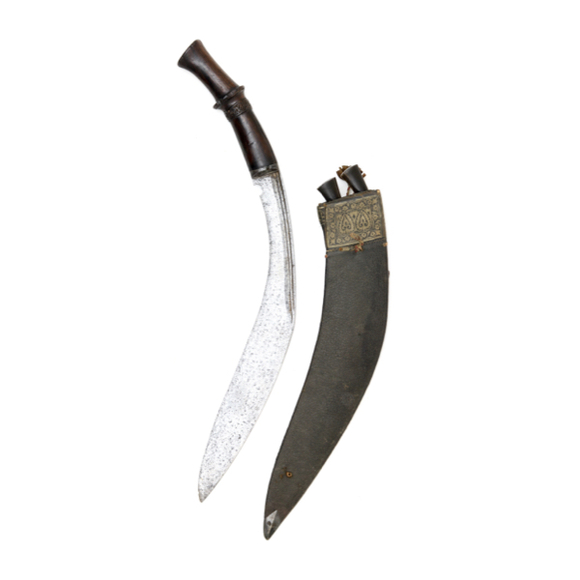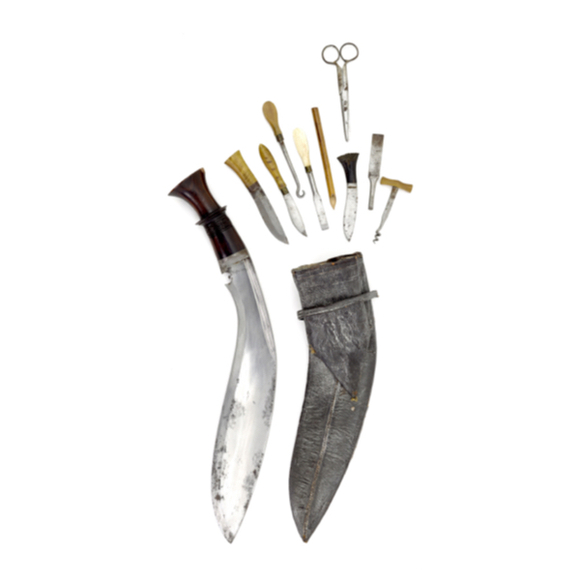Language: Acehnese
Source: Primary sources
Description
Peudeueng is the Acehnese variety of the word pedang which simply means sword. In north Sumatra, it is usually applied for the curved saber of foreign origin or local copies of such sabers.1
Acehnese peudeueng often come with basket hilts, called hulu meu apet. These were strongly inspired by Indian basket hilts of similar form. They were expensive and usually carried as a sign of rank and status.
Some collectors call them peudeueng peusangan, the last word meaning "curved".

Acehnese peudeueng with hulu meu apet
Sold by Mandarin Mansion in 2021

Acehnese peudeueng with hulu meu apet
Sold by Mandarin Mansion in 2016

Acehnese warriors.
Date & photographer unknown.
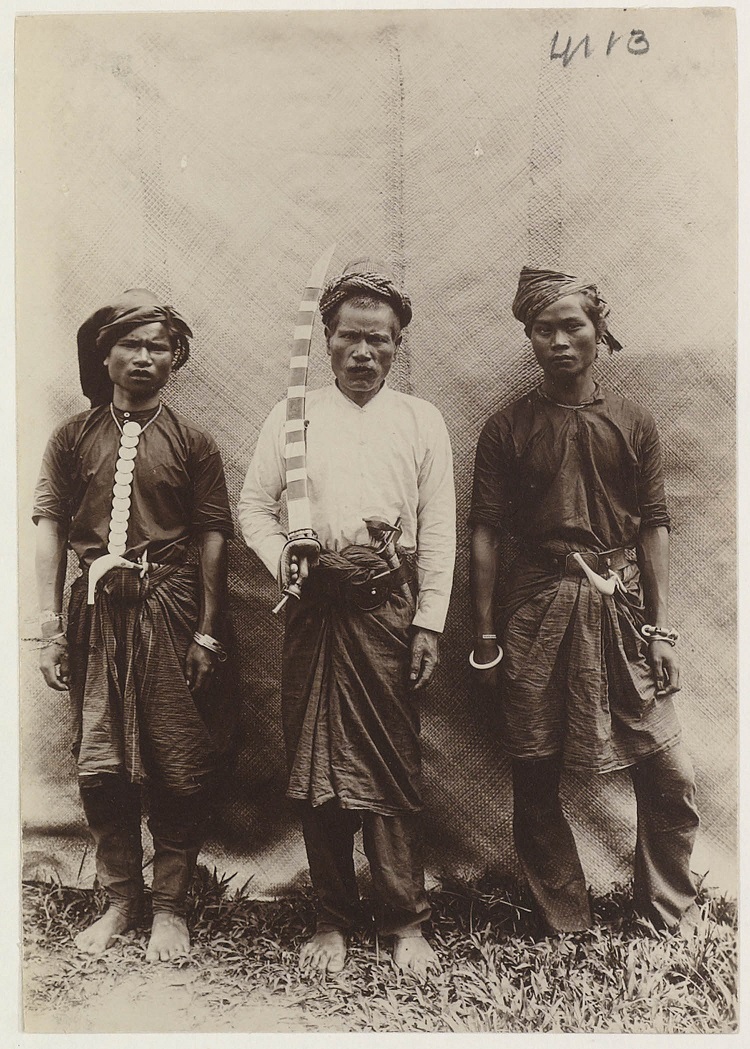
An Acenese gentleman and his peudeueng peusangan.
Photo by Henricus Marinus Neeb, around 1900.
From Photography Indonesia blog
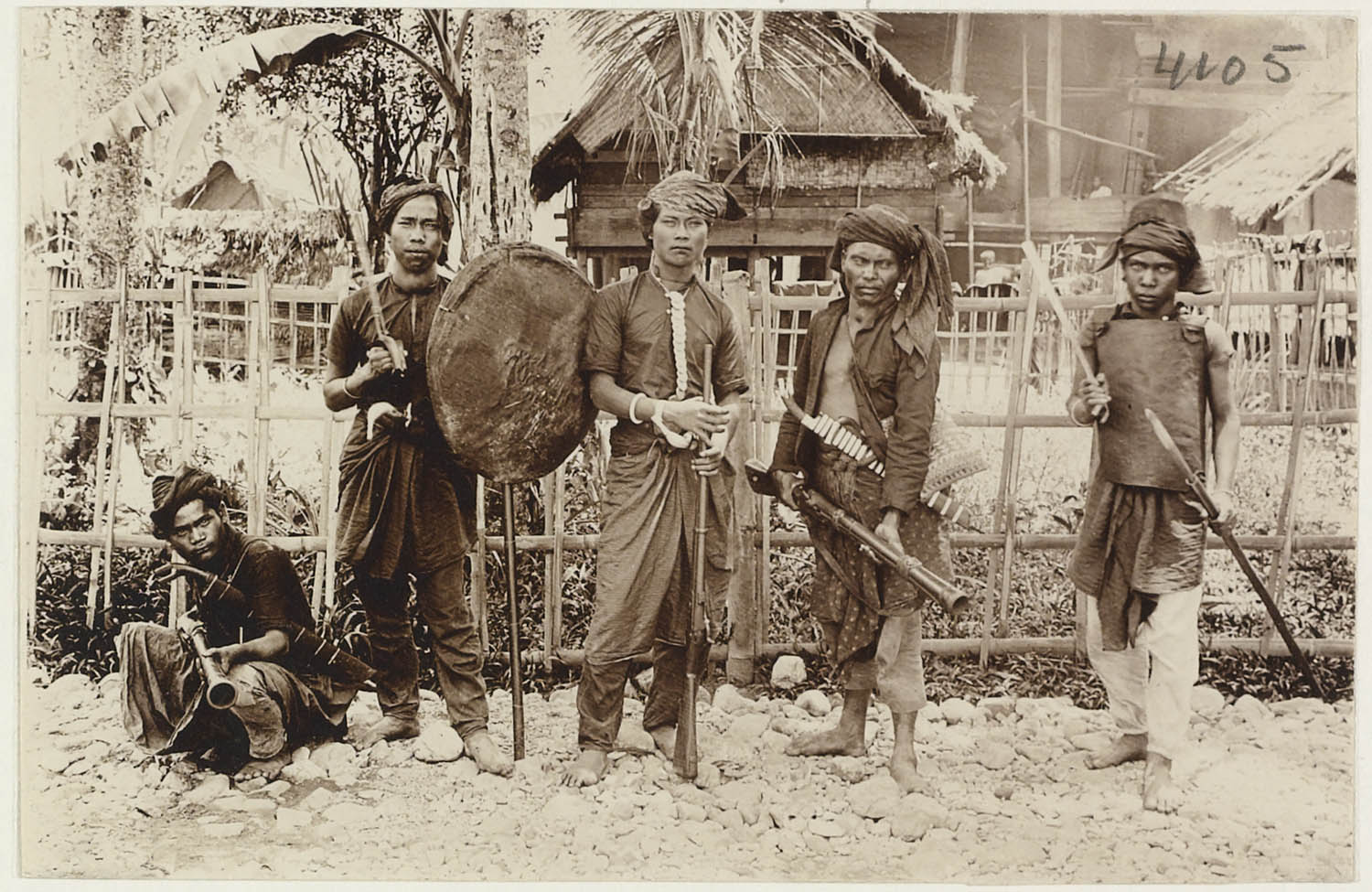
Some Acenese warriors. The second from the left carries a peudeueng peusangan.
Photo by Henricus Marinus Neeb, around 1900.
From Photography Indonesia blog

Teungkoe Ibrahim, son of the Sultan of Aceh.
Photo by Christiaan Benjamin Nieuwenhuis, around 1900.
From Tropenmuseum Amsterdam.
Indian origins
Very similar swords can be seen on stone statues at the Vijayanagara period Ranganathaswamy Temple, Srirangam.

A stone statue at the Vijayanagara period Ranganathaswamy Temple, Srirangam.
Photo courtesy of Richard Mortel from Riyadh, Saudi Arabia.
Wikimedia Commons.
Notes
1. Albert van Zonneveld; Traditional weapons of the Indonesian archipelago. C. Zwartenkot Art Books, Leiden. Page 101-102.

